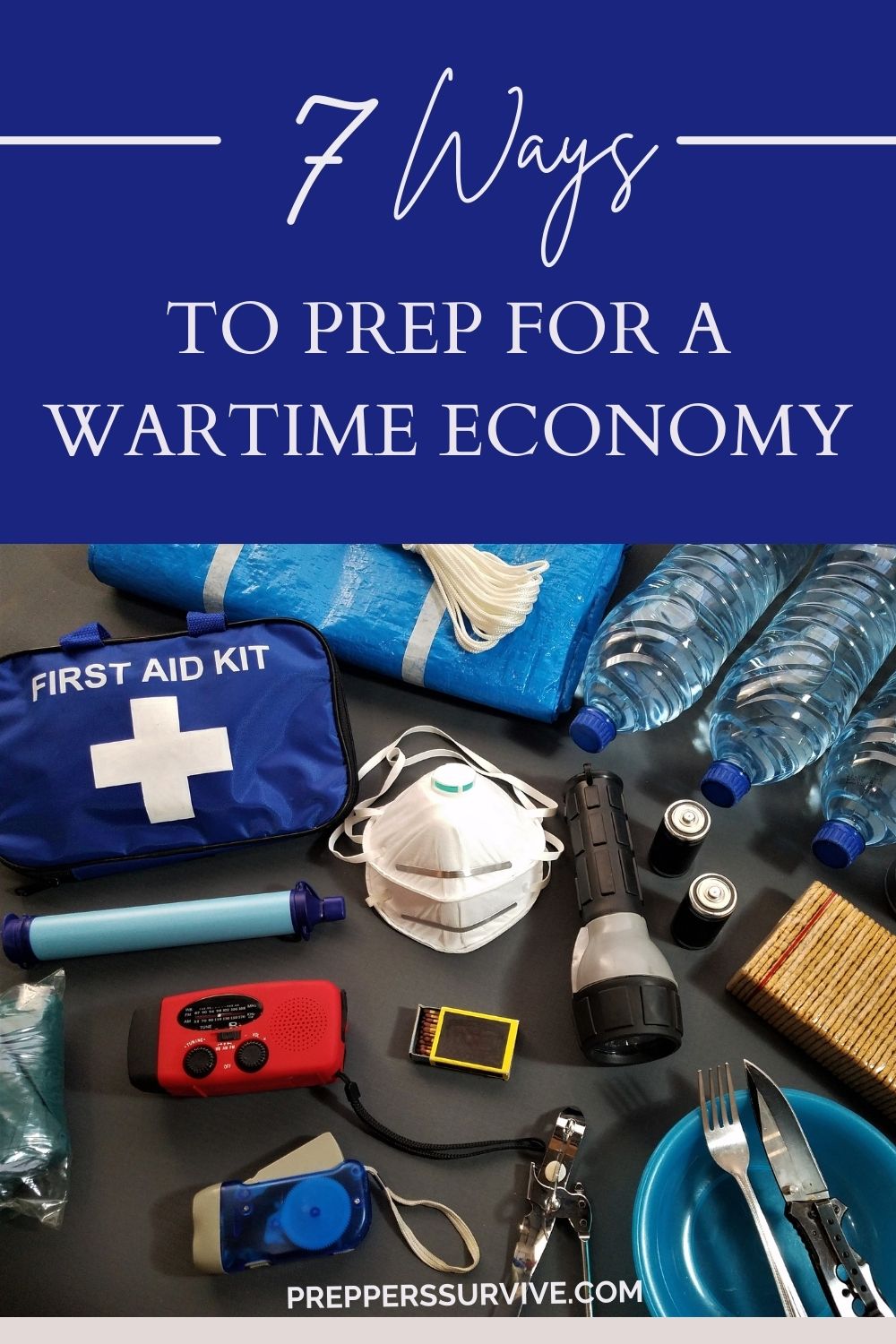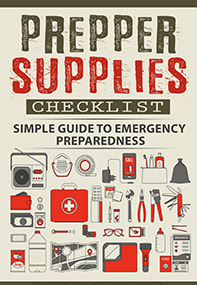
By the end of 2021, we experienced two new variants of the COVID pandemic (Delta & Omicron). There has been a decrease in housing inventory, causing home prices to increase by 19.9% in value. The United States has experienced a 7% increase in inflation, a shortage of microchips affecting the supply of home appliances and electronic gear, favorite food items randomly going missing from stores periodically, coin shortages at local retailers, and emergency preparedness gear out of stock.
In 2022, we see photos of destruction in Ukraine and war stories filtered through our news feeds. Our fuel prices are soaring, and food prices continue to climb. It can have a frightening effect! The U.S. has placed “severe sanctions” against Russia for attacking Ukraine. We can only speculate how Russia will respond and how these sanctions will affect the U.S. economy. Russia’s top exports are wheat, crude oil, natural gas, precious metals, fertilizer, and metals (iron, steel, copper, aluminum).
It brings to mind questions like, is there a way to prep for a wartime economy? Am I prepared for higher food prices, grain shortages, stock market fluctuations, and a sense of peace despite economic changes?
Peace comes from having a plan! If you have been gathering extra food and stocking away other essential survival gear, then the answer is YES! Being prepared takes planning. Will there be some inconveniences – SURE – but that is life! It is important not to get caught up in doomsday headlines. Below are seven ways to prep for a wartime economy and feel some measure of control during uncertain times.
7 Ways to Prep a Wartime Economy
1. Consider Ways to Use Less Gas
With sanctions on Russia, it is widely believed that we will continue to see fuel prices race upwards. We use gas in our cars, trucks, RVs, generators, and lawnmowers. A hefty increase in prices can devastate a household’s budget. Make simple changes now before you feel the hurt in your pocketbook. Meal plan and try consolidating all of your errands to fewer trips to the supermarket per month. Teardrop Trailers are in high demand. Gas-guzzling RVs are being traded for smaller, gas-economic trailers. Electric bikes are another way you can minimize fuel costs.
2. Stock Up On Grains
Russia is the #1 international exporter of wheat. Common long-term food storage such as pasta, bread, and cereals are made of wheat. It was hard to find these food items during the start of the pandemic; most grocery stores couldn’t get these items on the shelves fast enough. The grains were sold out! Currently, most have restocked their inventory. So now is a good time to stock up on grains your family eats on a regular basis. Living off food storage is one way to cut costs when inflation takes a more significant chunk out of one’s paycheck.
Macaroni and Cheese was a common meal during WWII. When dairy was rationed, and in short supply during the war, a box of Mac & Cheese satisfied people’s cravings for the taste of cheese. Are you into sweet, spicy, crunchy, cheesy, chocolatey, or salty? Make sure you have some basic food staples stocked away, plus some foods that will curb a craving. I’ve been stashing a few boxes of brownies.
3. Grow What You Can
Russia is the largest exporter of fertilizer, they currently have a ban on exporting ammonium nitrate (fertilizer). This affects farmers worldwide, which drives the price of food up! It also increases the price of American fertilizer because of the international demand.
Food production costs have increased due to a shortage of farming parts, food packaging, and fertilizer. It has been cheaper to buy produce at the store rather than starting a garden from scratch – after paying for the seeds, fertilizer, garden box, pesticides, tools, etc. However, inflated food prices may soon change this reality.
In World War I and II, governments encouraged people to plant Victory Gardens. It was common practice to get produce from your backyard, neighborhood park, or church garden. As people worked together, many gardens populated communities.
Consider planting a fruit tree, start collecting gardening seeds, get serious about a vegetable garden, add an indoor herb garden, sprout seeds in a jar, start a mini mushroom farm, and learn more about hydroponic growing systems.
4. Look into Preserving Food
Have you tried to make jam, juice, or dehydrated snacks? It is a great hobby to start and may pay dividends in the future. There are various ways to preserve food, such as freeze-drying, canning, freezing, and dehydrating. Some can cost little to no money, like learning to dehydrate produce using the sun. Other ways to preserve food take planning and saving for equipment. It is a great way to prep for a wartime economy!
5. Have an Alternative Heat Source for Your Home
Natural gas prices have been relatively low (below $6) over the years. The cost now is $4.31 as of Feb 15, 2022, up from $2.84 in February 2021. That is a 50% increase before the war in Ukraine was announced, leaving natural gas uncertain. It’s never been more prudent to own an indoor safe portable propane or kerosene heater as an alternative heat source.
6. Improve Your Bug Out Bag
Whether in war or preparing for a natural disaster, have a bug-out bag for each family member, just in case. If everyone already has a bag, then update them. Rotate the food, batteries, pepper spray, and clothes (if you’ve changed sizes). Replace cheap survival gear with better equipment if you can. Decide where you would go if you needed to flee your home – Red Cross shelter, out-of-state family, or a favorite camping spot. Have a list of bug-out locations, out-of-state family and friend addresses, and phone numbers.
7. A List of Supplies
No one wants to be clamoring for the same scant supplies as their neighbors if World War III breaks out. What items would help you provide for your family if the worst happens? There is plenty of evidence depicting upcoming supply shortages and inflated costs of goods. Whenever a situation threatens vital everyday supplies, it impacts our freedom. When we move toward self-reliance, we limit the helplessness that comes with volatile markets. Self-reliance is a prerequisite for freedom! Now is a good time to prepare!! Get or make a list of emergency supplies that would come in handy in the event of a disruption in the supply chain.
Thanks for visiting Preppers Survive. Before you leave, subscribe to our newsletter. If you enjoyed this article, Prep for a Wartime Economy, please share it on your favorite social media.









FYI- Your canned goods picture scares me a bit! Newer guidelines for safe canning will not involve turning the jars upside down. Poor canning practices can result in spoilage and families eating dangerous food that can cause sickness and maybe even death. Get a copy of the USDA Complete Guide to Home Canning to learn the best canning methods.